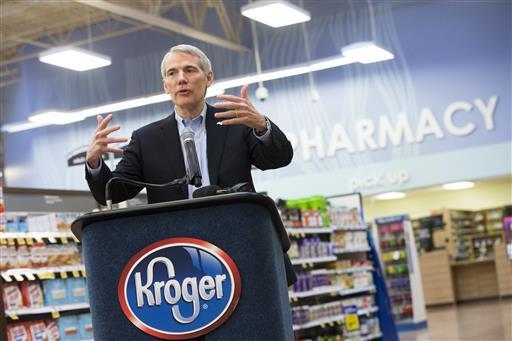Section Branding
Header Content
Georgia Among States With Lowest Rates of Prescription Drug Misuse, Study Says
Primary Content
The Georgia Department of Public Health released numbers last week showing the number of prescriptions for opioids written in the state has fallen. But a recent study shows the state has one of the lowest rates of painkiller misuse in the country at 3.7%.Ruchi Dhami leads the research team with American Addiction Centers. She says Georgia’s Prescription Monitoring Program enacted in 2017 helped fuel the decline in prescriptions written for opioids, GPB's Ellen Eldridge reports.
Hawaii has the lowest number of residents who misuse medication at 3.4%, according to a study by River Oaks Treatment. The data for the study came from the Substance Abuse and Mental Health Services Administration's 2017 National Survey on Drug Use and Health.
American Addiction Centers Director of Brand and Design Ruchi Dhami, who leads the team of researchers, said policy is making a difference in Georgia, which is tied with Illinois, Massachusetts and New Jersey for second lowest number of prescription drug misuse in the country.
The Georgia Prescription Drug Monitoring Program was enacted in 2017, giving pharmacists, nurse practitioners, doctors and other prescribers a tool to help prevent addiction.
"It's really designed specifically to combat the opioid abuse that has been happening in the state," Dhami said.
FEATURED: How One Police Department Is Trying To Steer Addicts Into Recovery Instead Of Making Arrests
When it was established, the program created an electronic database used to monitor prescribing and dispensing of controlled substances, which helped eliminate duplicative prescribing or overprescribing, Dhami said.
"It really equipped prescribers and pharmacists with information about a patient's controlled substance prescriptions history so that they can be aware of any patterns or signs or red flags that there may be abuse or potential for abuse," she said.
MORE: Rep. Buddy Carter On Combating The Opioid Crisis
The law requires prescribers — doctors and dentists — to check the database with information about a patient's prescription history. That includes how often they've been prescribed painkillers such as short-acting hydrocodone, which is the most commonly prescribed opioid in Georgia, according to the health department.
In addition to the PDMP, publicity about the dangers of opioids and the expansion of treatment programs may be driving the decreases.
RELATED: Billboard Campaign Seeks To Show How Georgia Recovers From Substance Use Disorder
New figures released by the state health department show prescriptions fell 13% from 2016 to 2018 and preliminary numbers also show opioid-related overdose deaths dropped by 12% between 2017 and 2018.
Dhami said that while the state has a low number of prescription medication misuse, policymakers and local leaders should continue to pay attention to drugs of addiction.
"There are dozens of drugs out there that can be misused and can be really addictive," Dhami said. "It's possible that Georgians may be misusing drugs, but a different type instead of prescription drugs."


